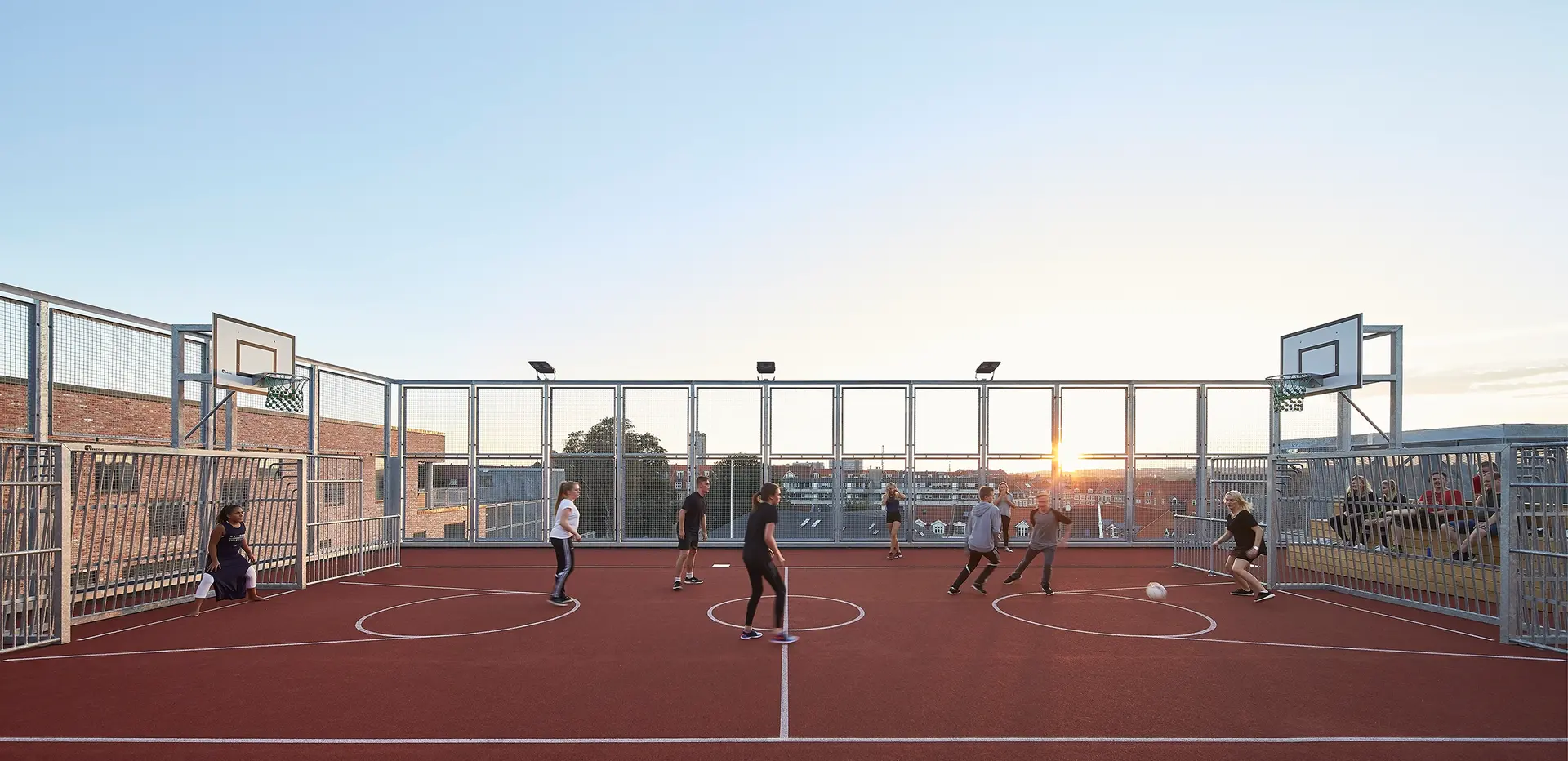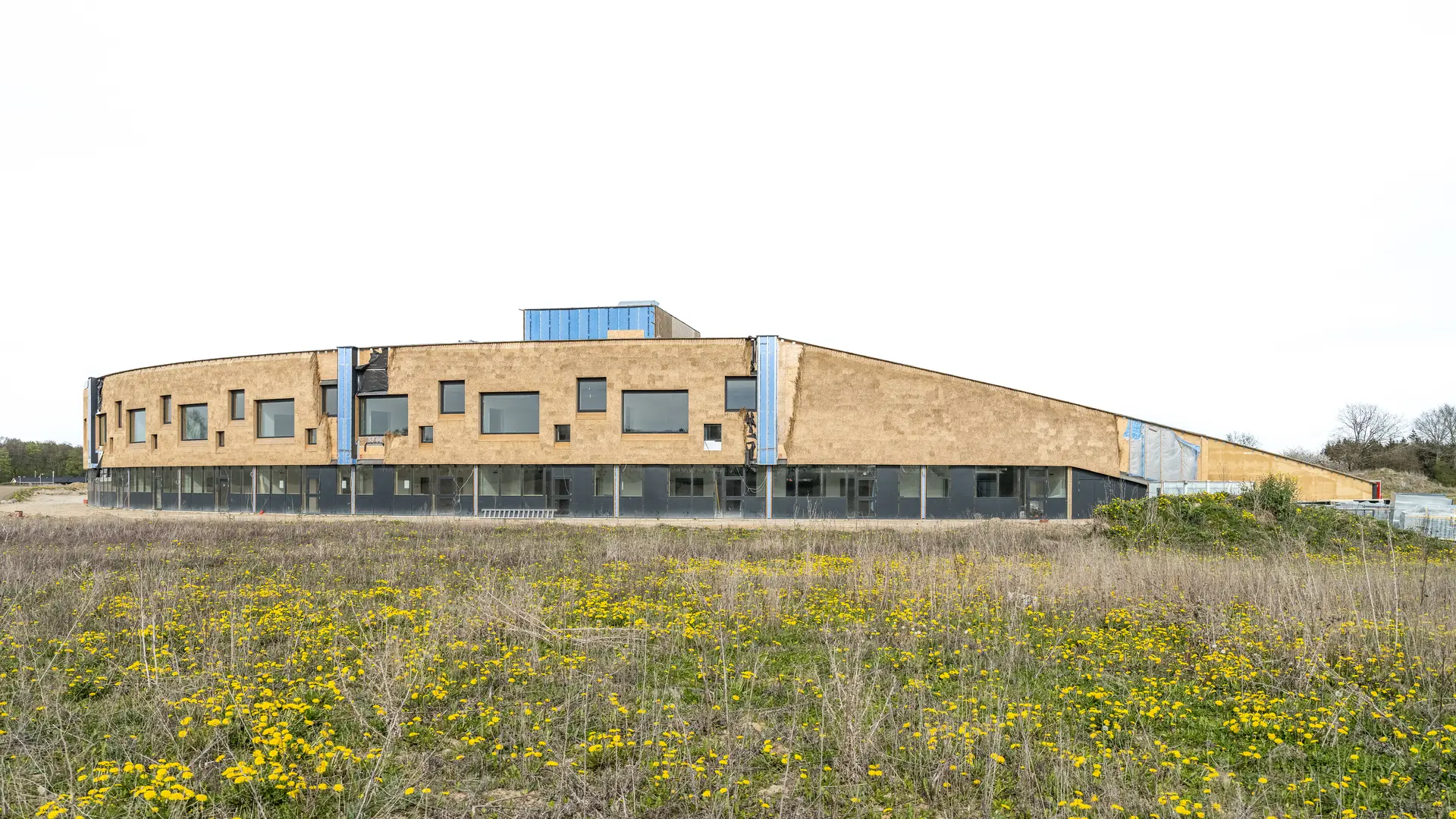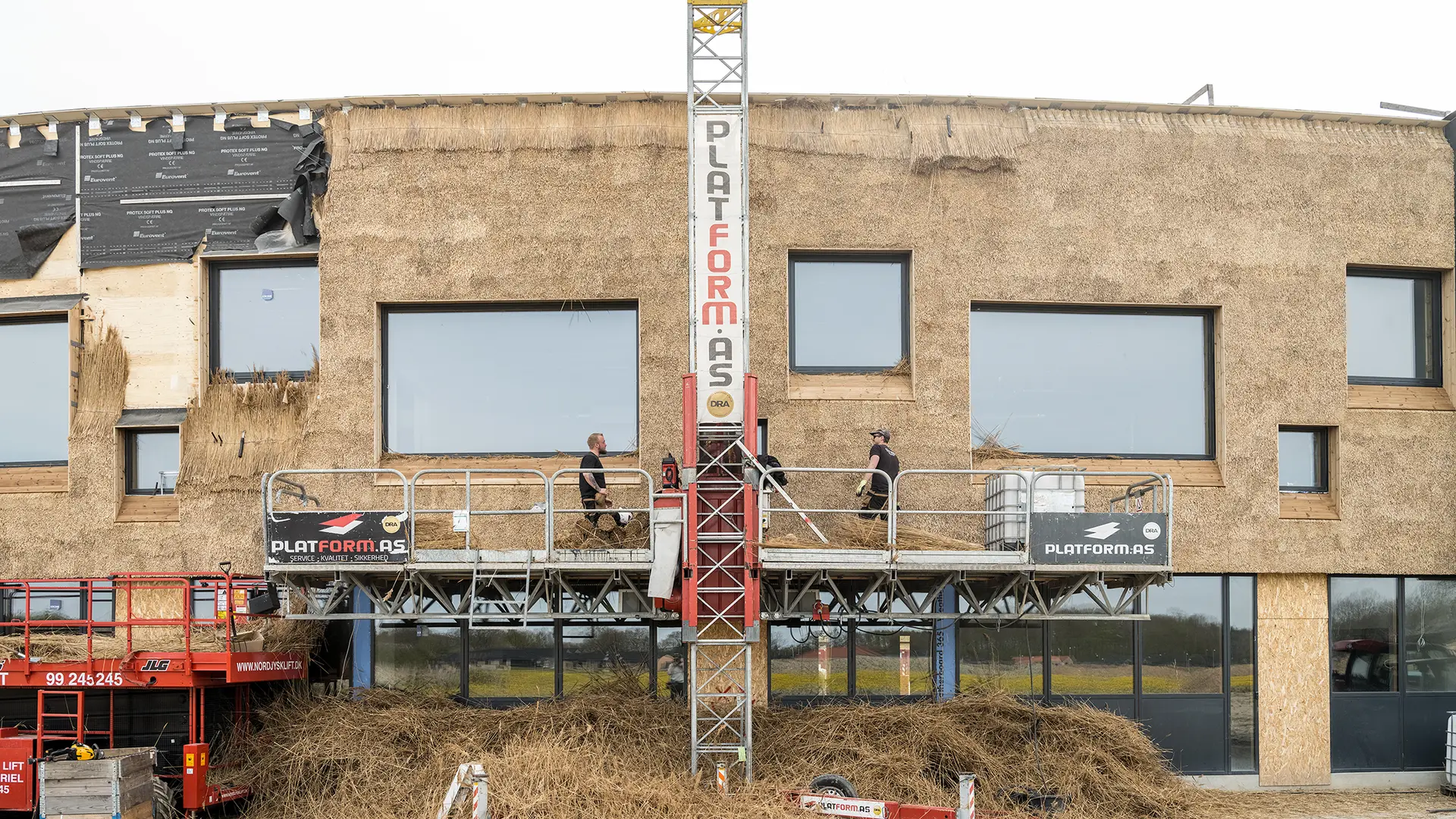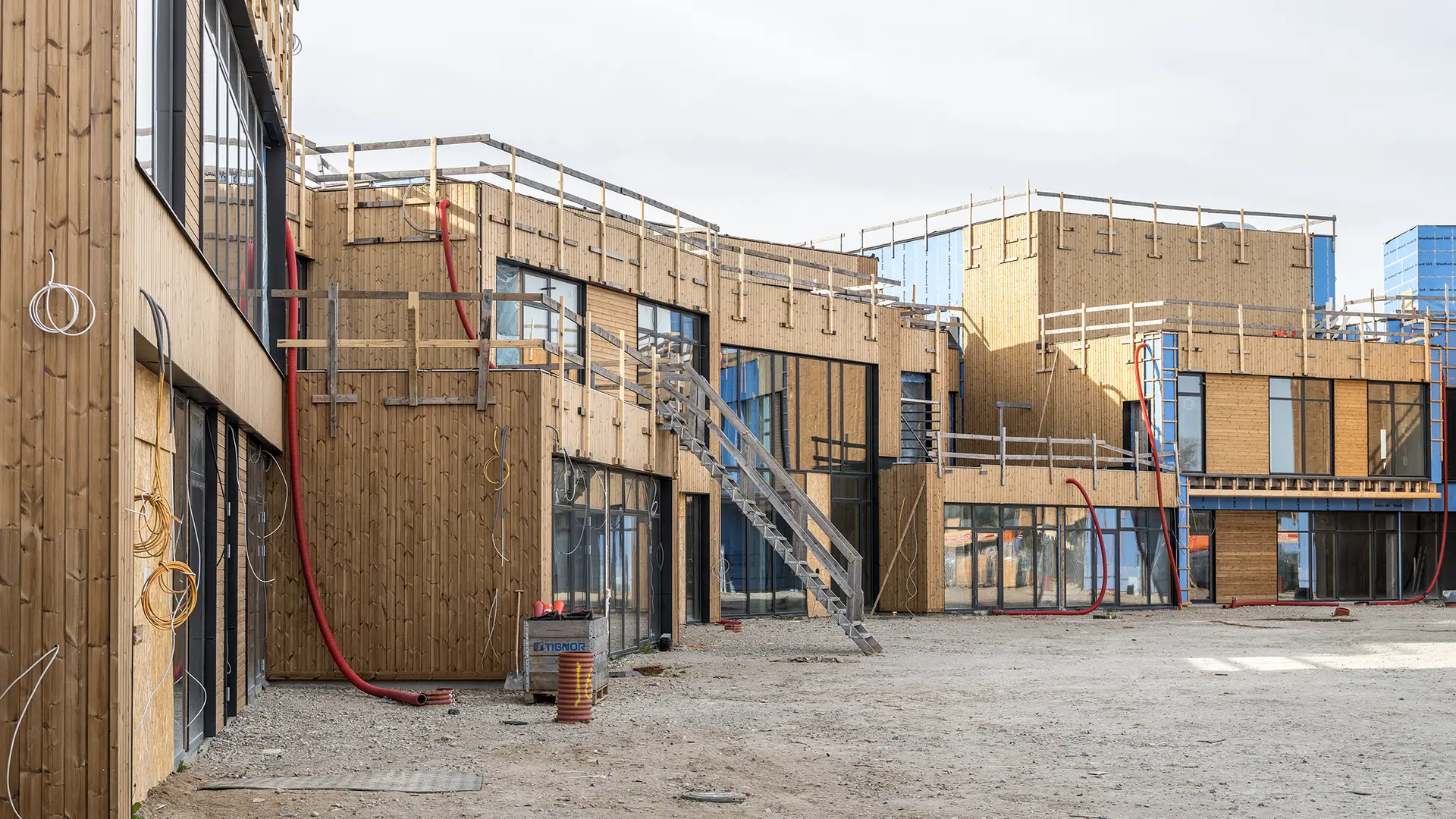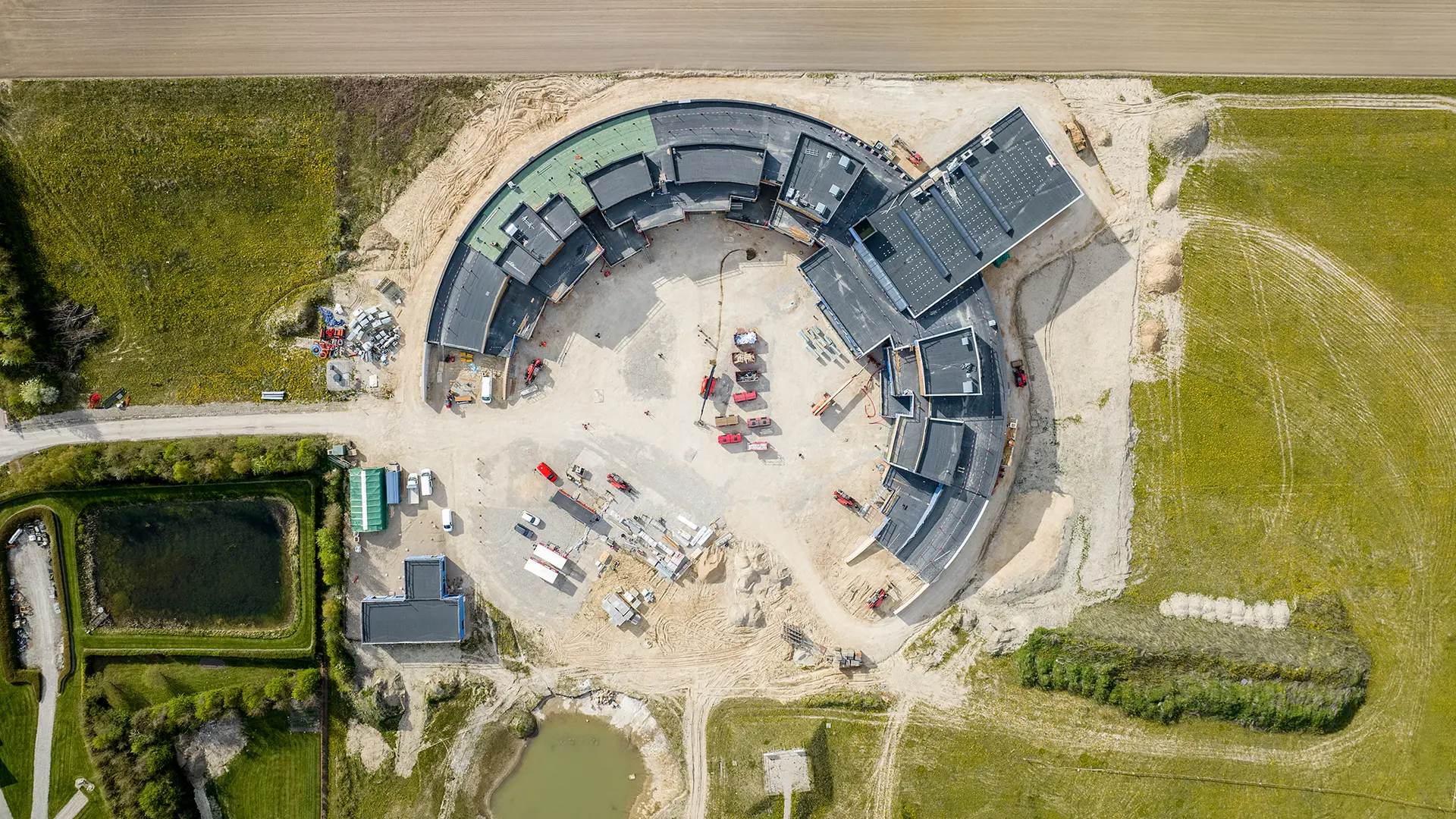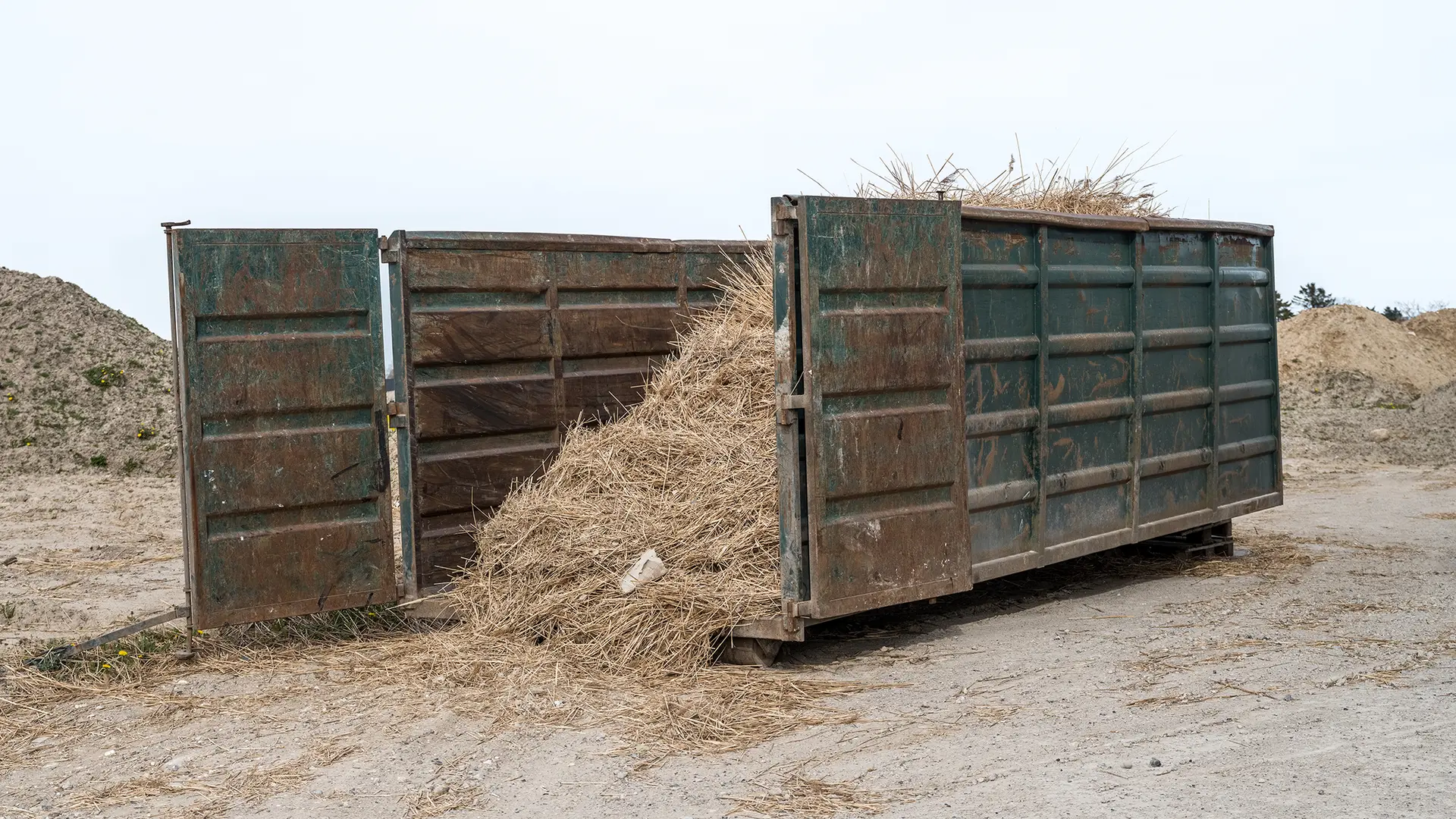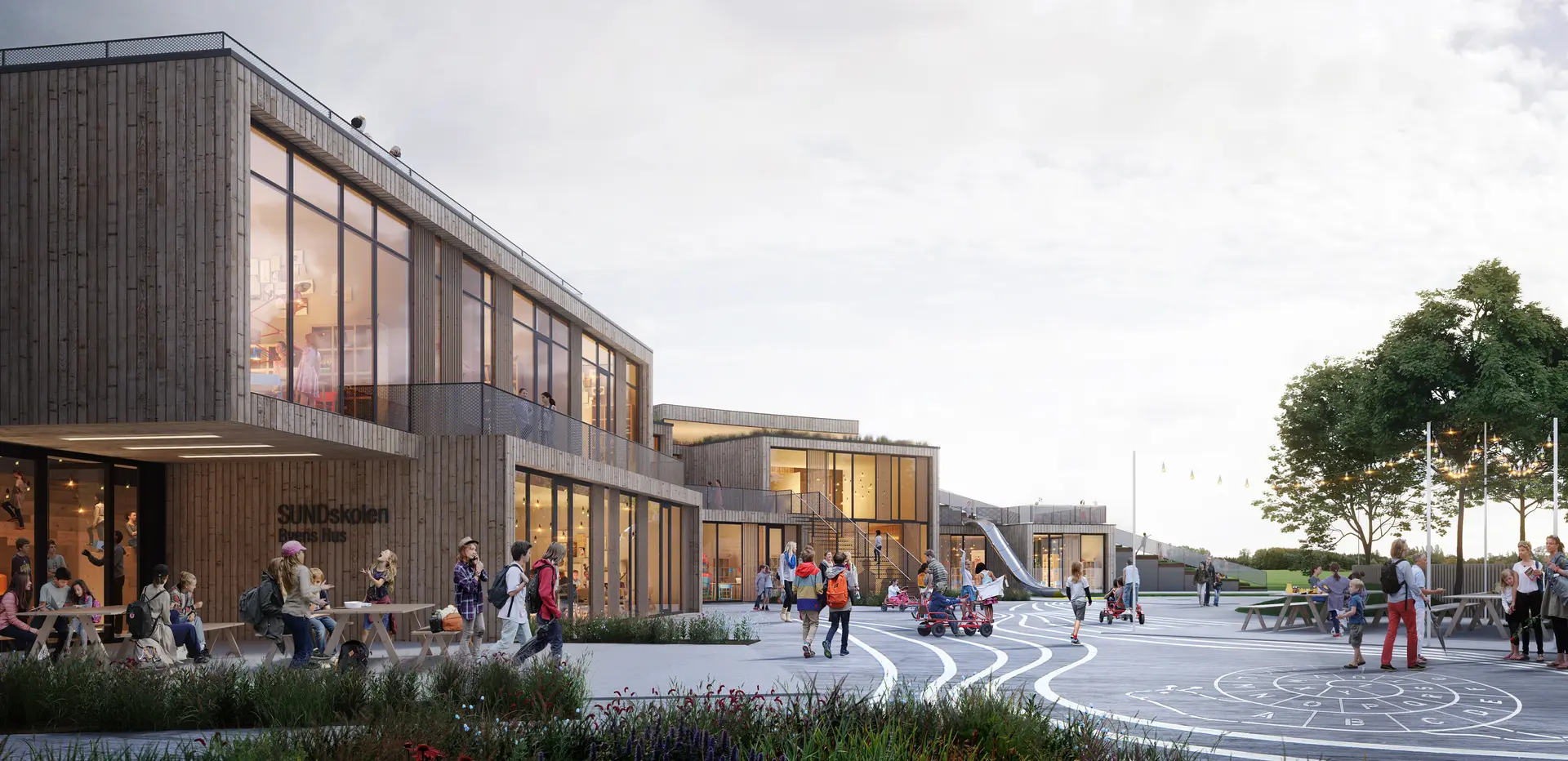
Nykøbing Falster, Denmark
2019 - 2026
Sundby School
Sundby School uses environmentally minded materials and energy-efficient technologies while mindfully engaging with its surrounding natural landscape and local heritage.
Project details
Located in the rural region of Lolland-Falster, the Danish town of Sundby has seen a general decline in recent years. From diminished population size to low income and education levels, the area is facing significant challenges that residents say produce a decreased sense of pride and ownership. Peeling back these contextual layers, it became evident to us that Sundby Primary School should strive to be much more than a modern learning environment. Our design had to convey confidence in the future of the town and offer the community something to enjoy and take pride in.
With these ambitions, we turned to one of the area’s defining qualities: its predominantly horizontal landscape and surrounding agricultural fields. Working within scenery that is most often taken for granted by locals, we set out to offer a new perspective on the otherwise mundane, and to capture the poetic subtleties of the landscape.
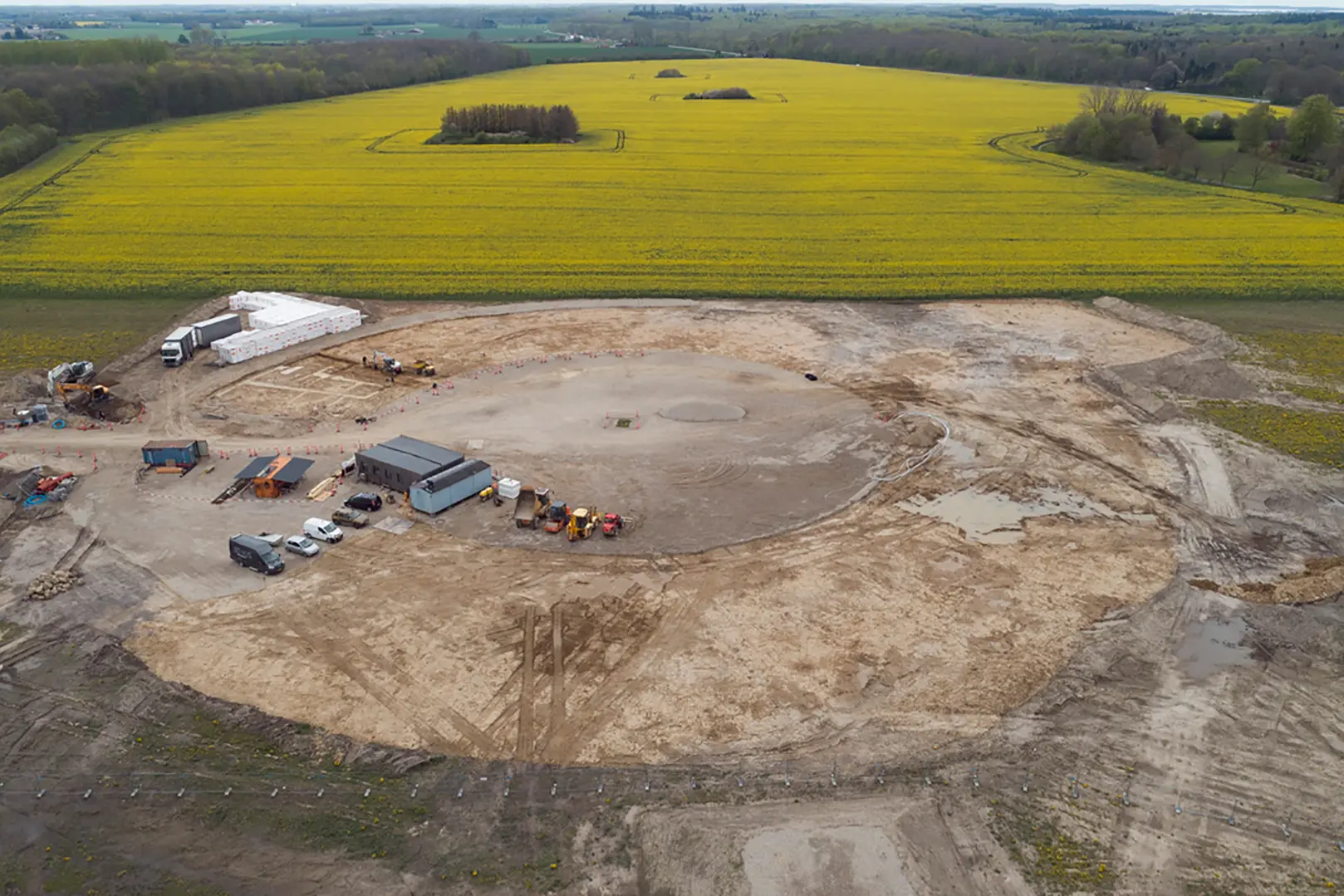
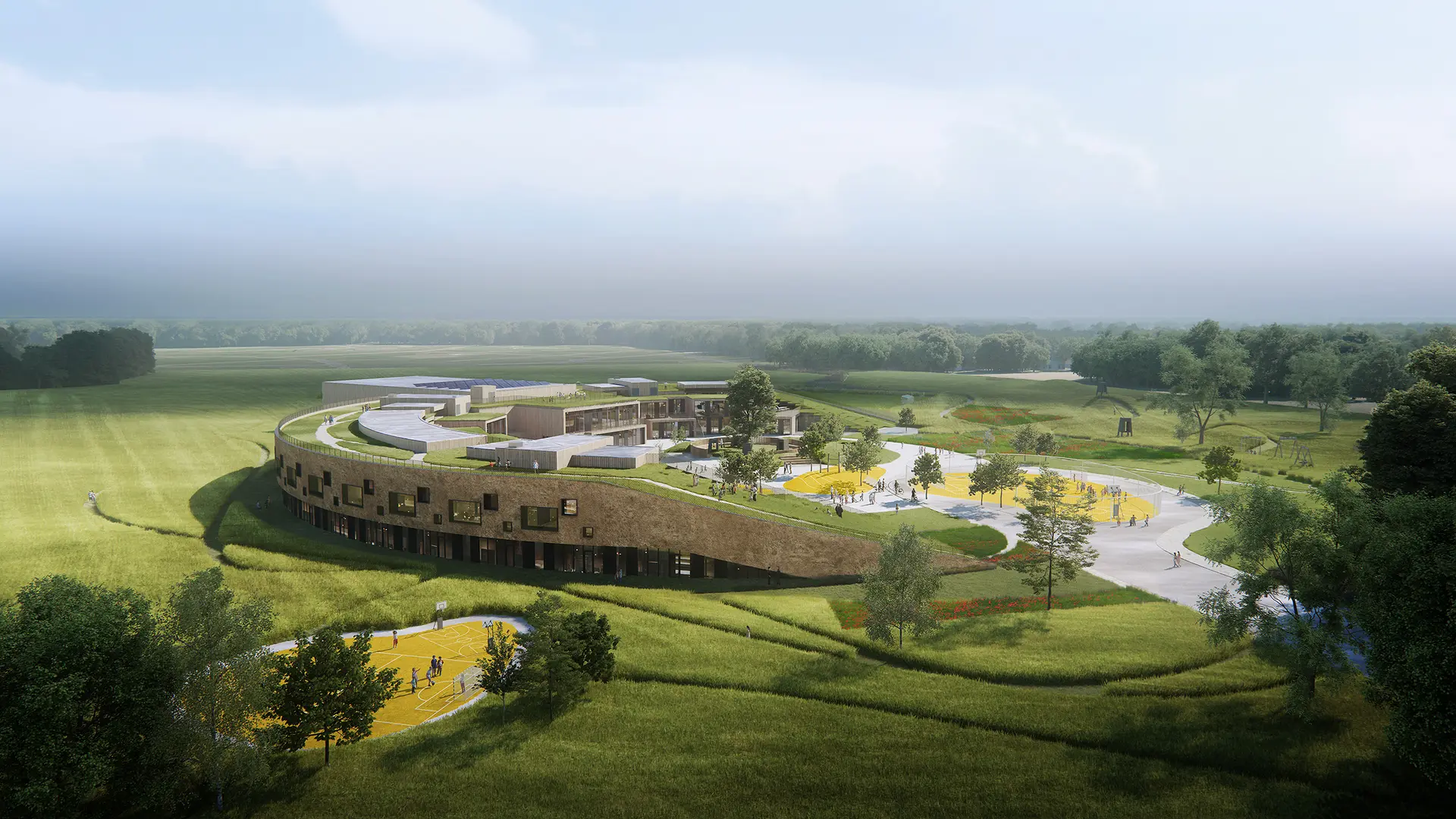
A nod to heritage
Using its location as inspiration, Sundby School references the area’s heritage, from its Viking past to its present surroundings. The island of Falster was a Viking hotspot for centuries, and the architecture of the school makes references to and celebrates this history. Like the inner circles of Viking fortresses, the design is constructed as an open circle, creating a safe, protected sanctuary for the children and the community where outdoor learning and recreation play a central role. The building’s thatched façade and orientation, too, are designed to acknowledge the landscape and conditions.
“Straw is found in abundance in the area and has been used traditionally in local architecture, in the unique feature of thatched façades,” says Per Ebbe Hansson, Lead Design Architect and Head of Learning. “Introducing this element in our design, we were able to reference local heritage and mirror the school’s surroundings, with the aim of uplifting both."
Located at a transitional zone on the edge of town, at the meeting point between the residential area and open fields, the school is unfenced and without boundaries between the built and natural environment. Emphasized by its architectural gesture, the building encourages a fluid relationship between indoors and outdoors – from its careful consideration of local wind patterns creating optimal conditions for playing outdoors, to its publicly accessible sloping roof. Becoming part of the landscape, the roof is designed to evolve with the seasons and invite members of the community to an array of possible activities, whether sledding in the winter or simply enjoying a sunset.
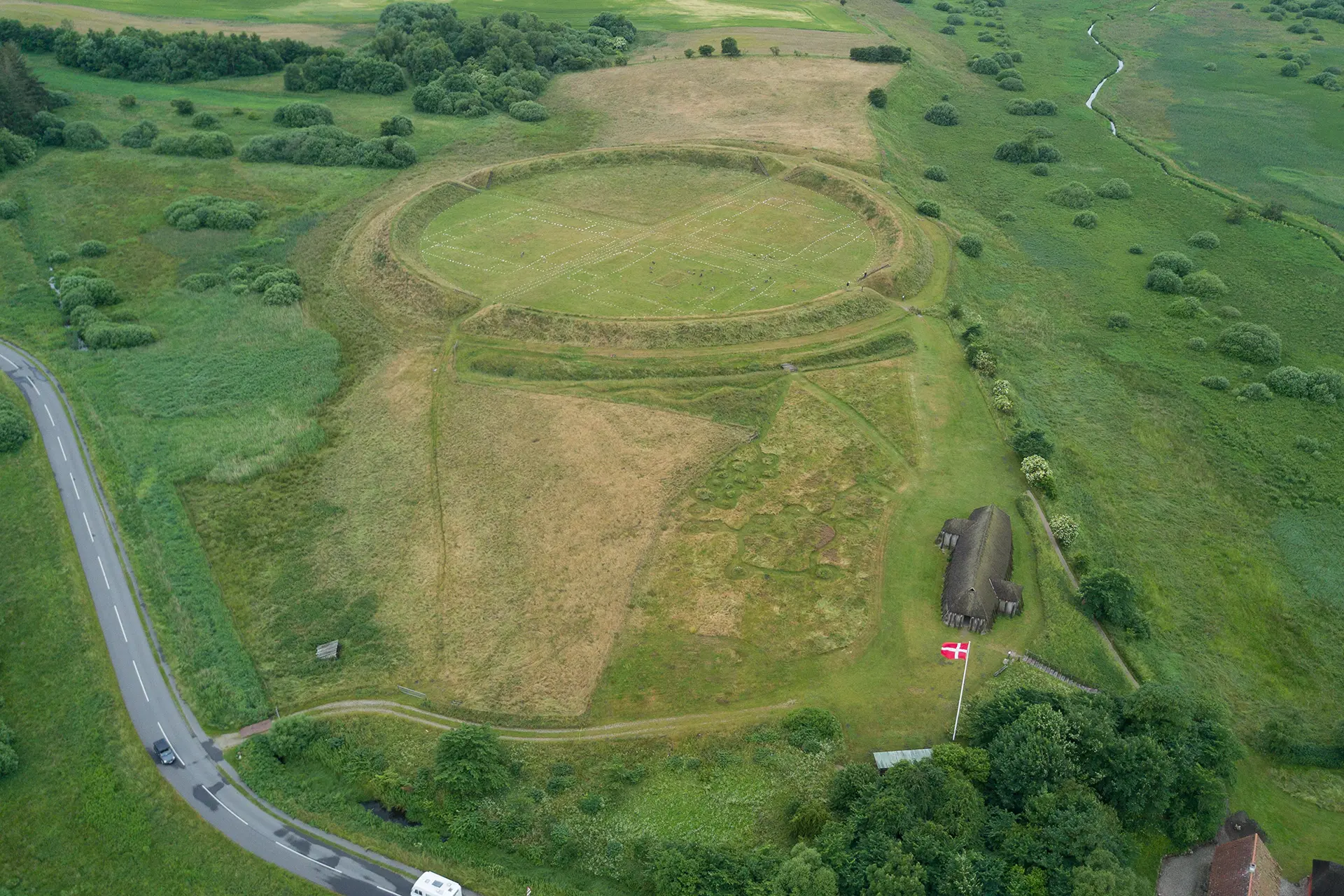
“Straw is found in abundance in the area and has been used traditionally in local architecture, in the unique feature of thatched façades. Introducing this element in our design, we were able to reference local heritage and mirror the school’s surroundings, with the aim of uplifting both.”
Per Ebbe Hansson
Lead Design Architect
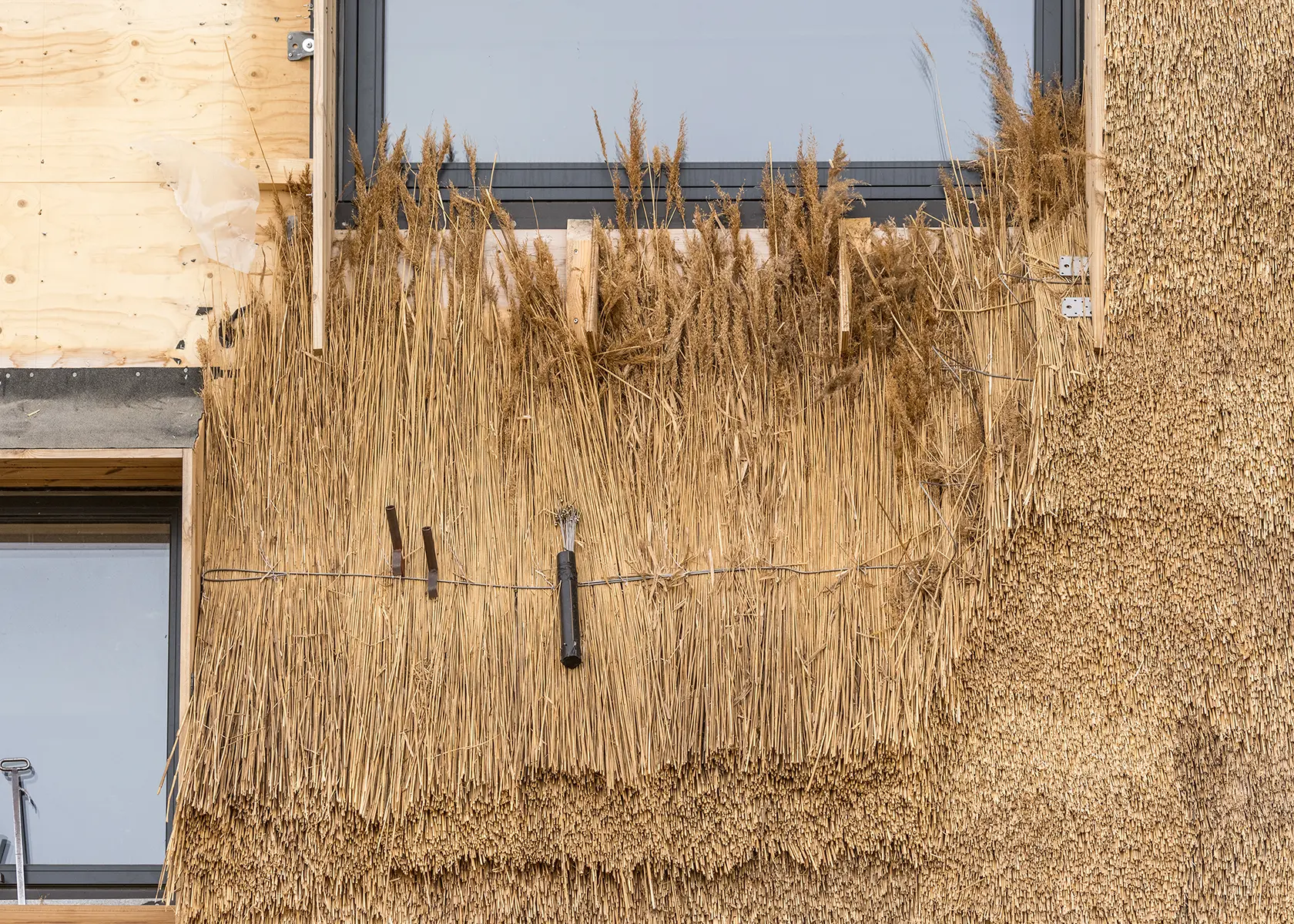
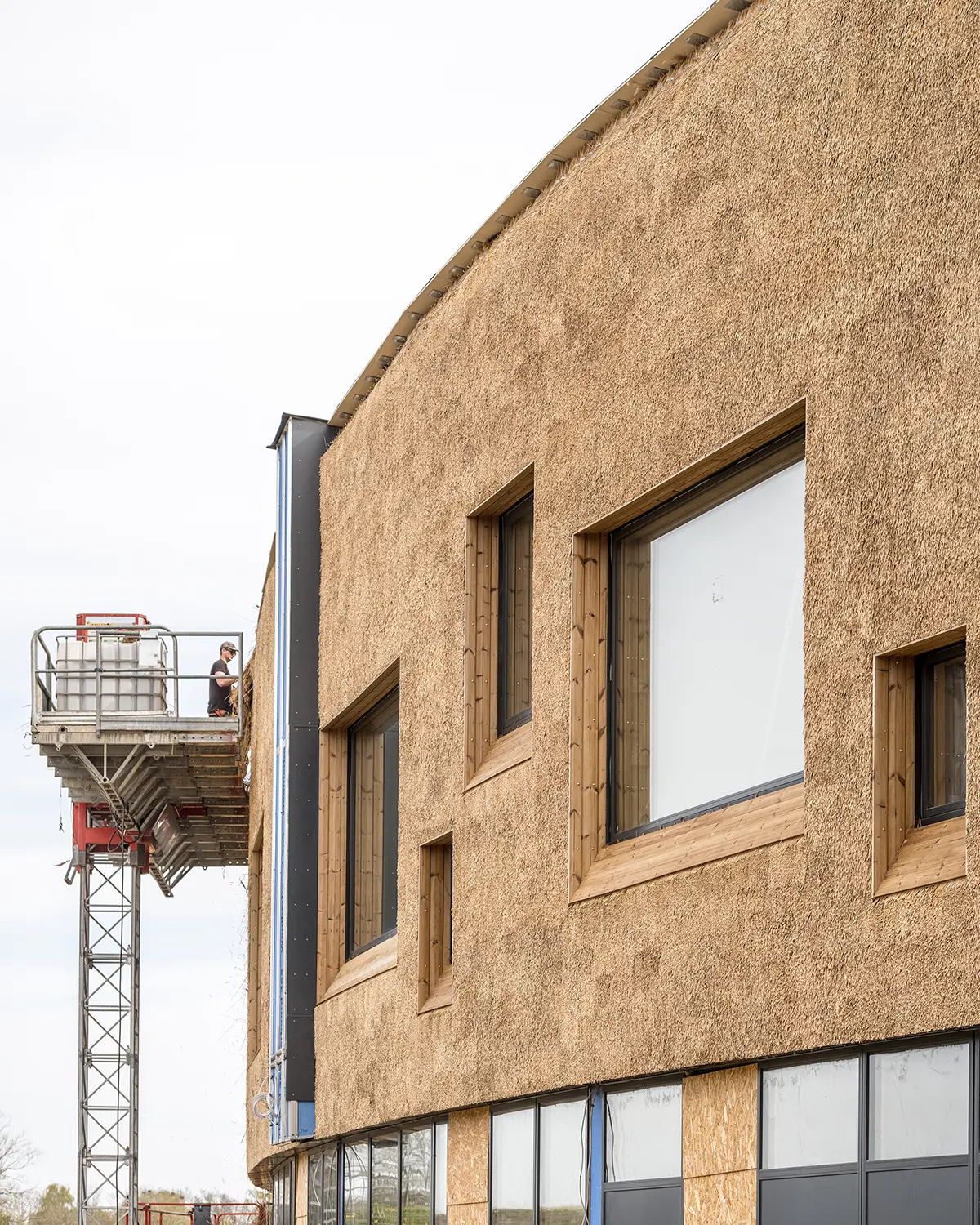
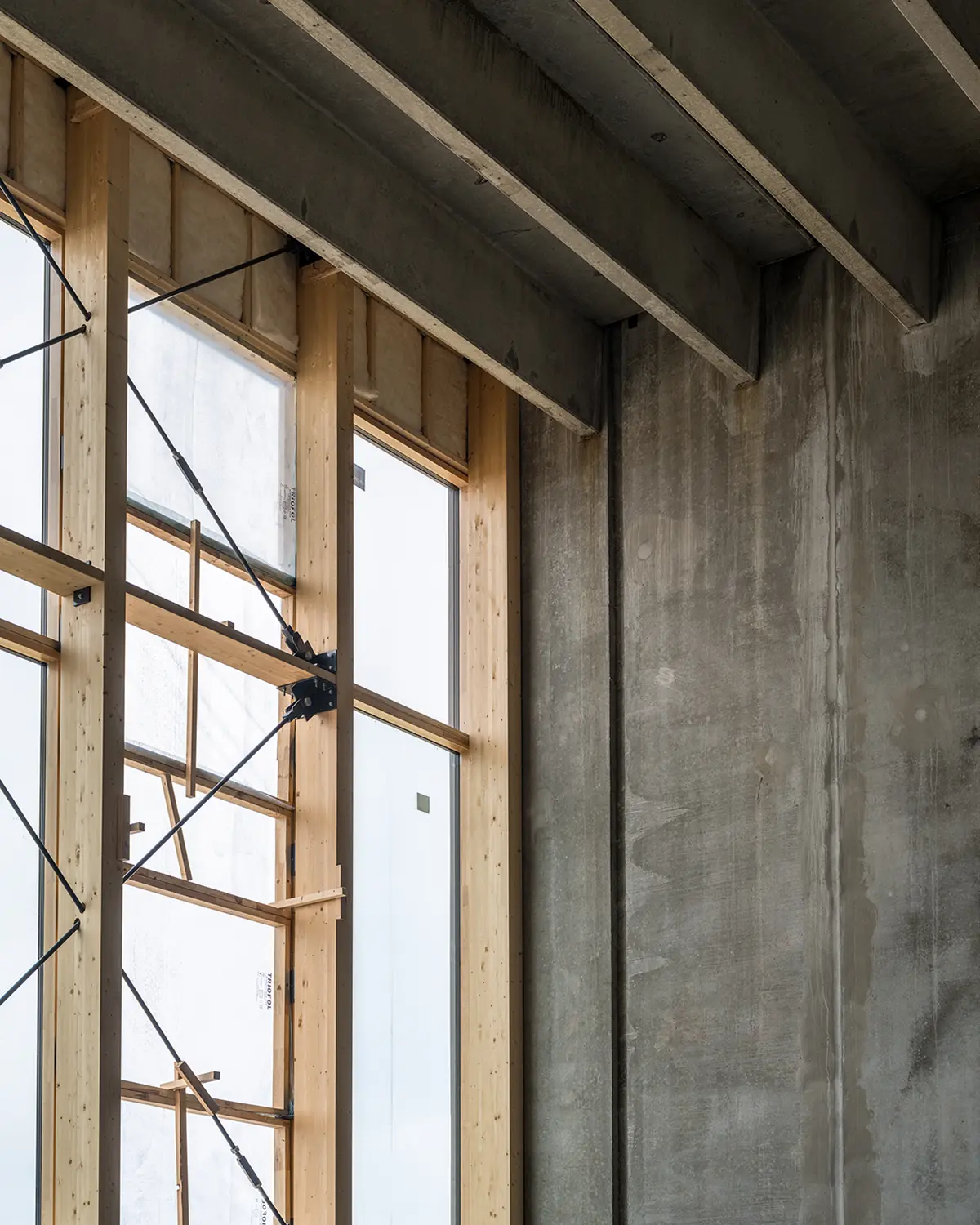
01/06
A healthy learning environment
Conditions relating to daylight, humidity, acoustics, and air quality are all essential to a healthy indoor climate and can have significant effects in creating an environment conducive to comfort and learning. The school’s attention to these elements has earned it the title of the first Nordic Swan Ecolabel Primary School of Denmark.
In addition to creating robust classroom spaces, particular attention was paid to spaces outside the traditional learning environment. The design takes advantage of the school's proximity to nature and aims to bring the outdoors – and an active, outdoor attitude – in. It features a great variety of adaptable spaces that offer new ways of learning and working, including rainwater collection sites and numerous gardens, where children can grow fruits and vegetables for their shared daily lunches.
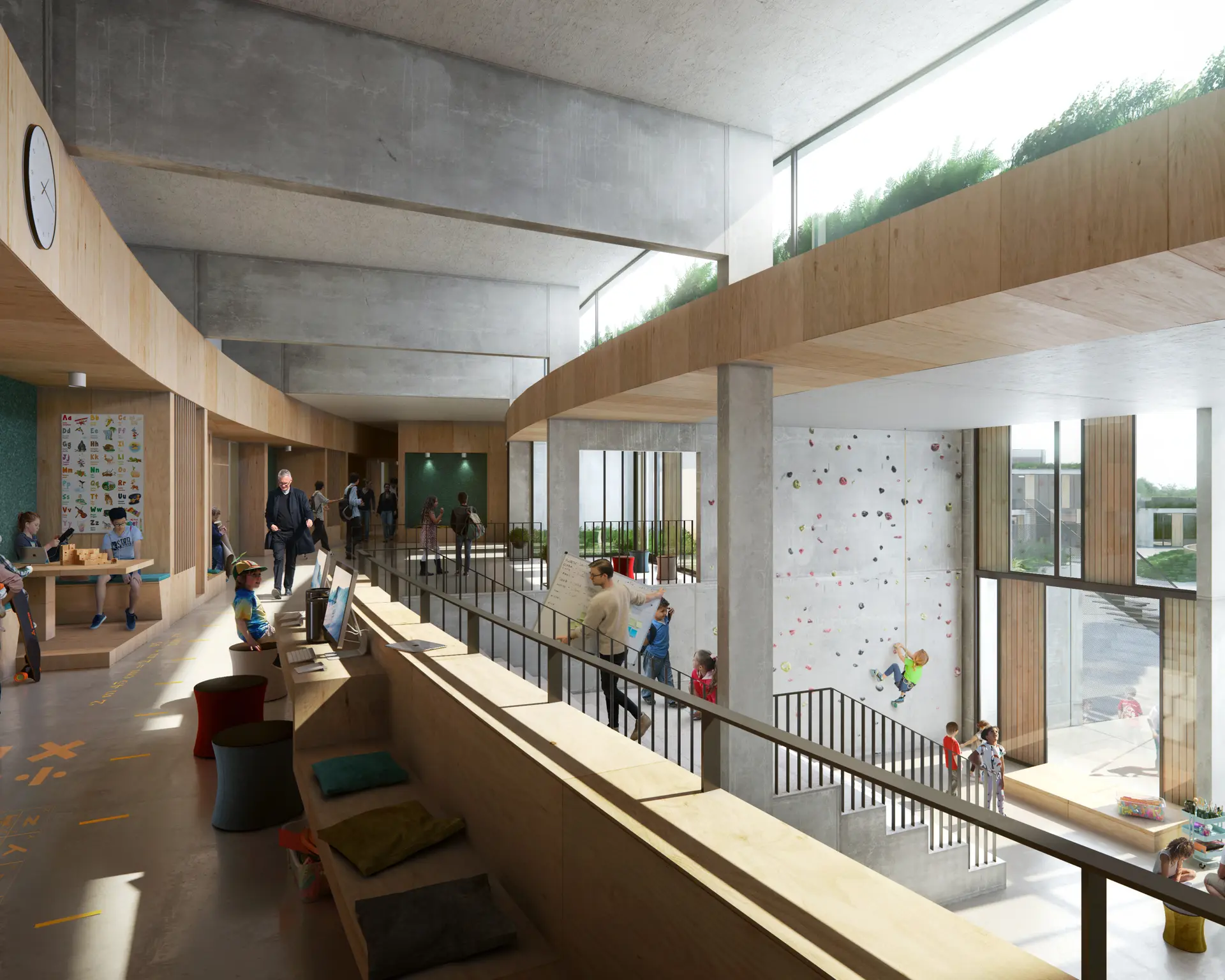
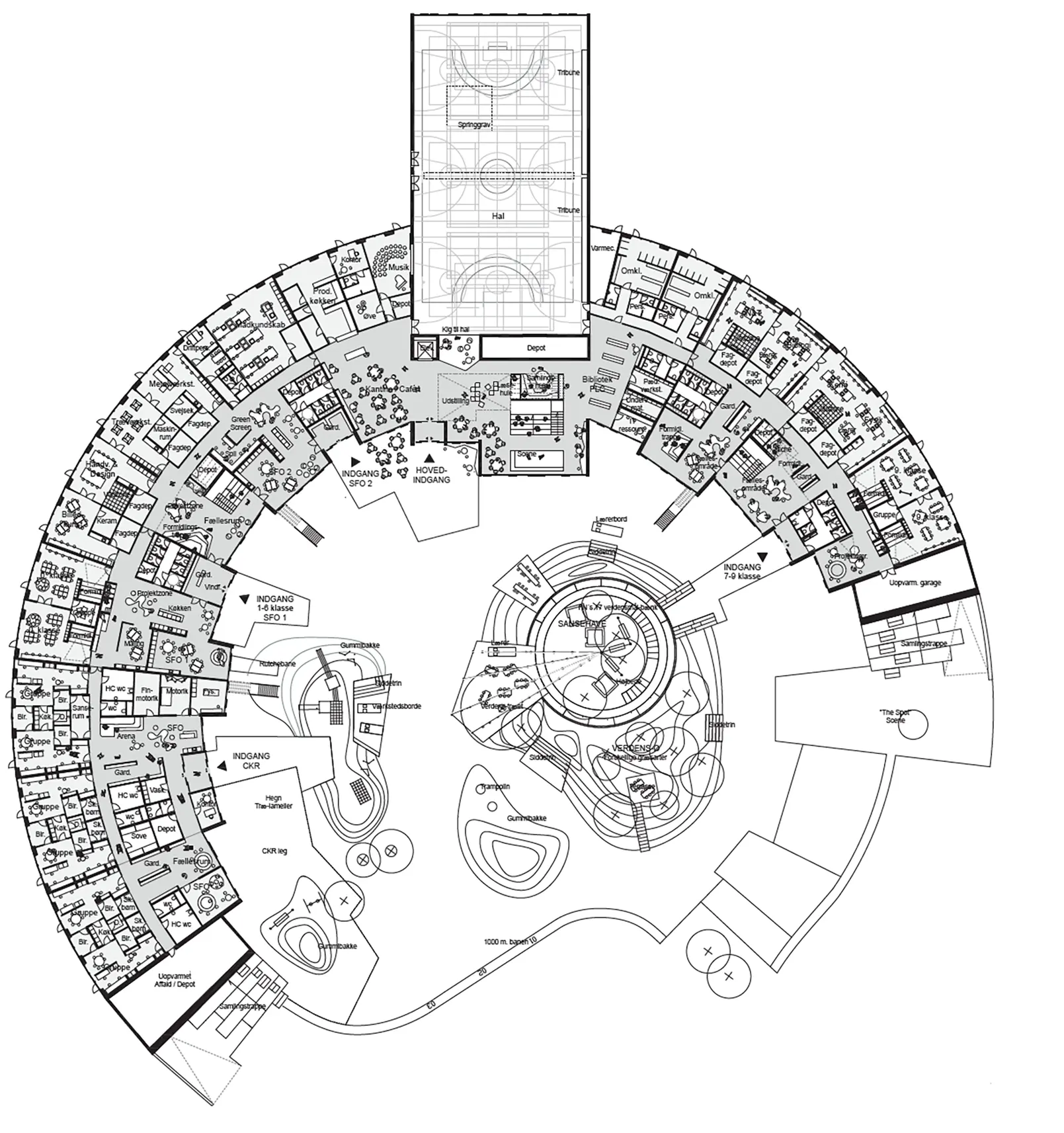
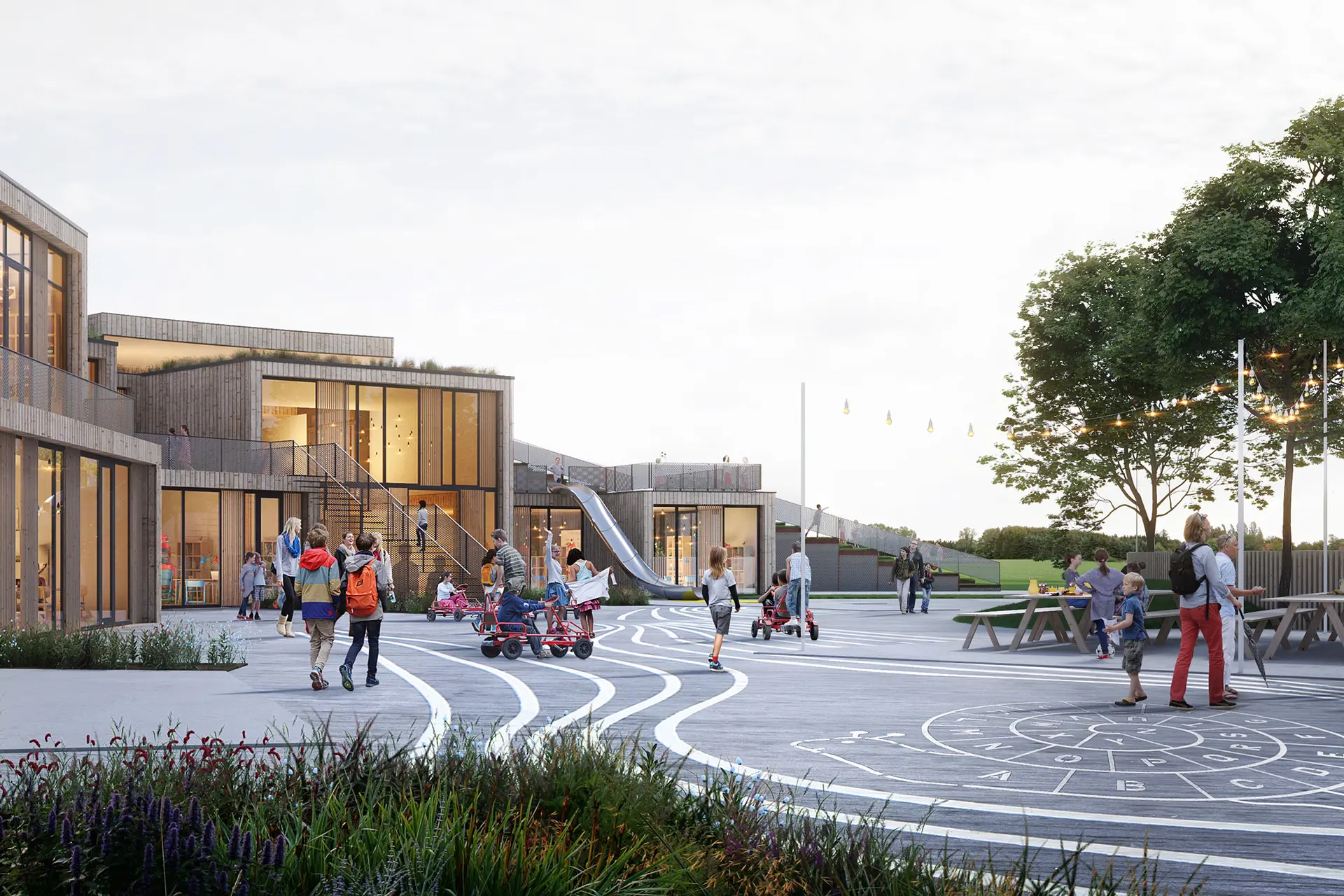
Designed to evolve
Designed with a clear vision to create a bridge between the students and the local community, Sundby School will have an original capacity of approximately 580 children and 100 employees. Spread over two floors, with a library, café, sports and music facilities, the school aims to invite the local community in, activating the space also after school hours.
The school's building structure is intended to be flexible, so that various functions can change location and layout as the needs evolve. Eventually, it is imagined that the school will expand from two to three stories, ensuring that it will continue to stand as a flexible and adaptable community driver for many years to come.
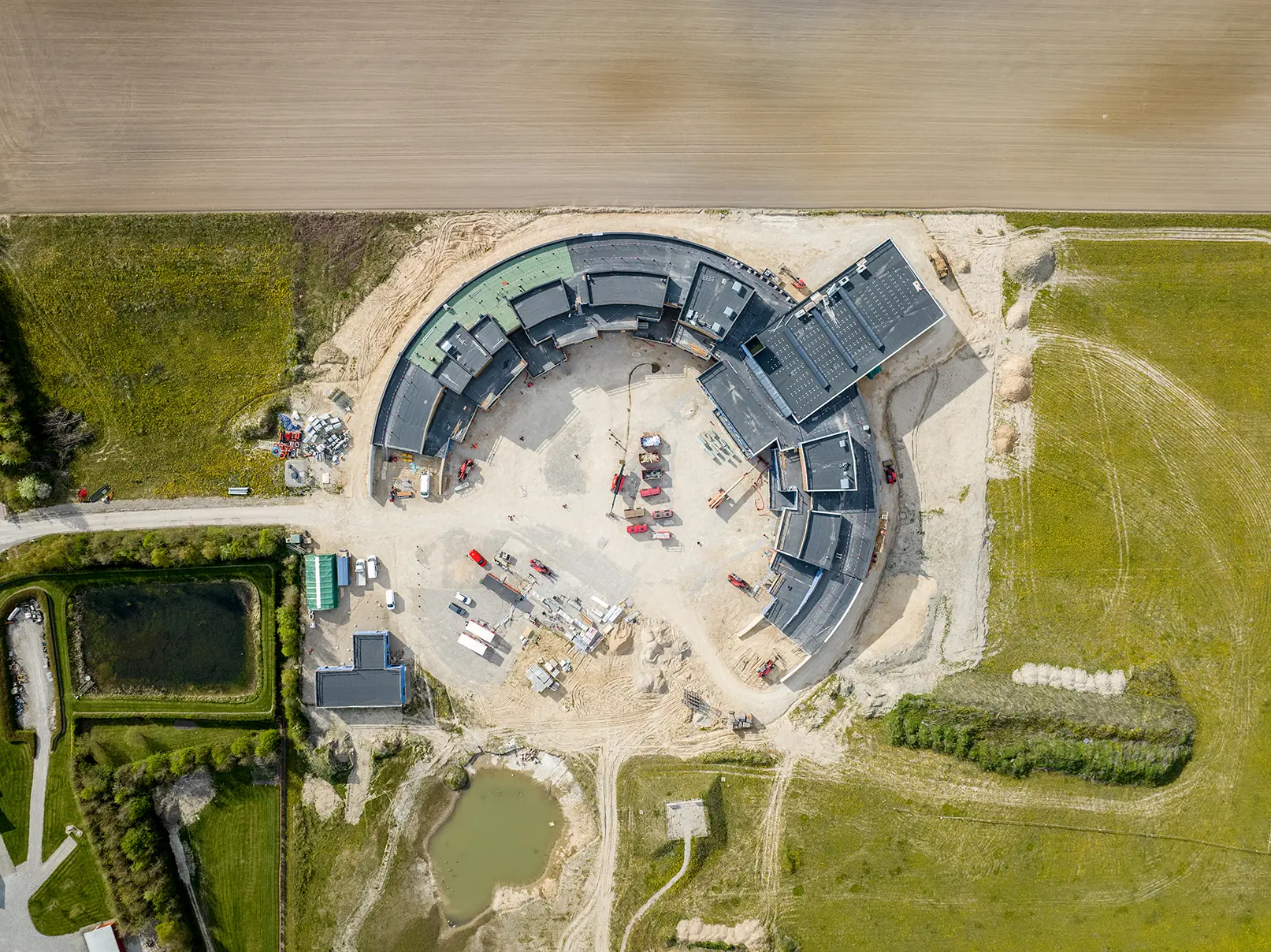
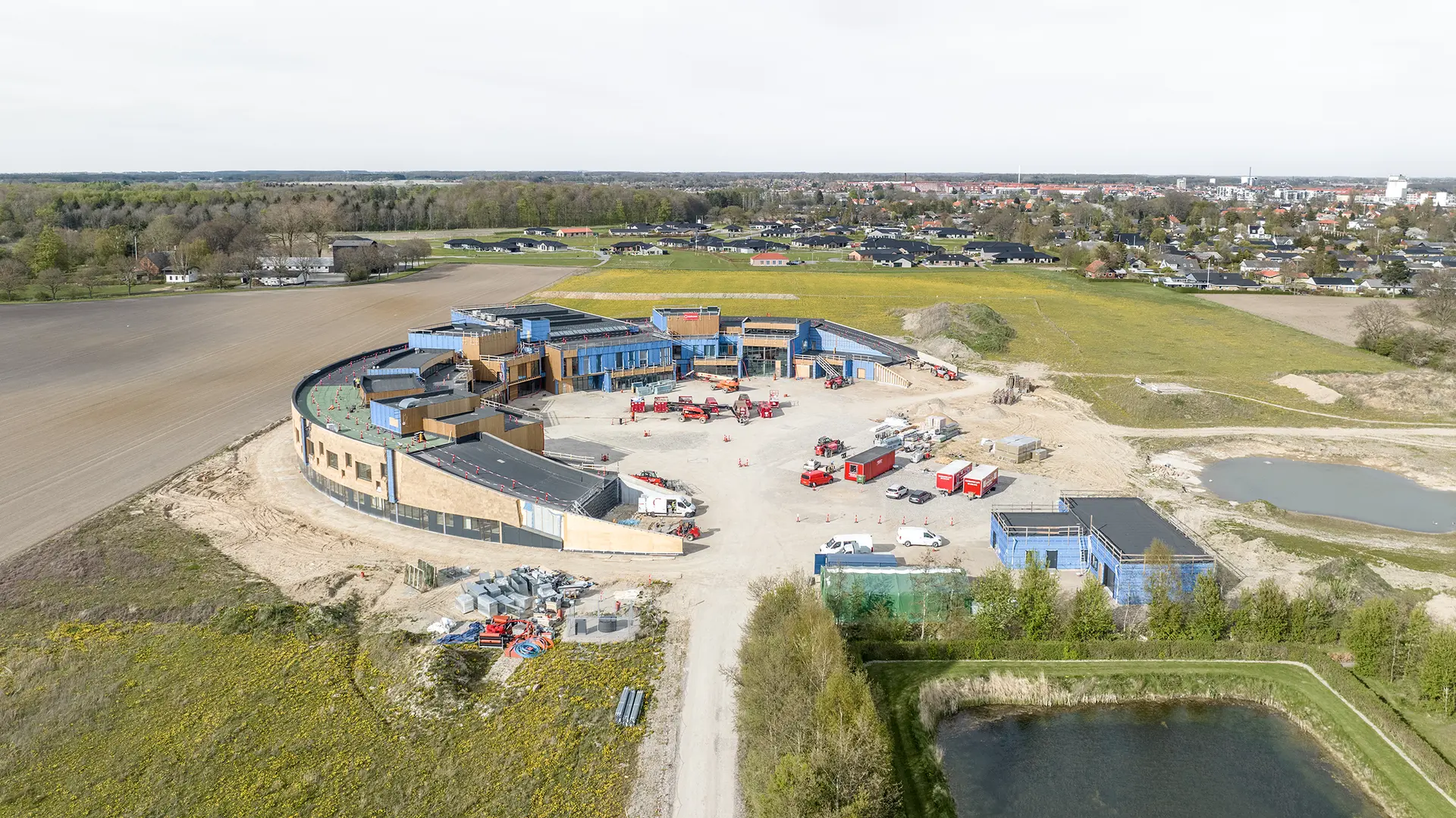
Contact
All contacts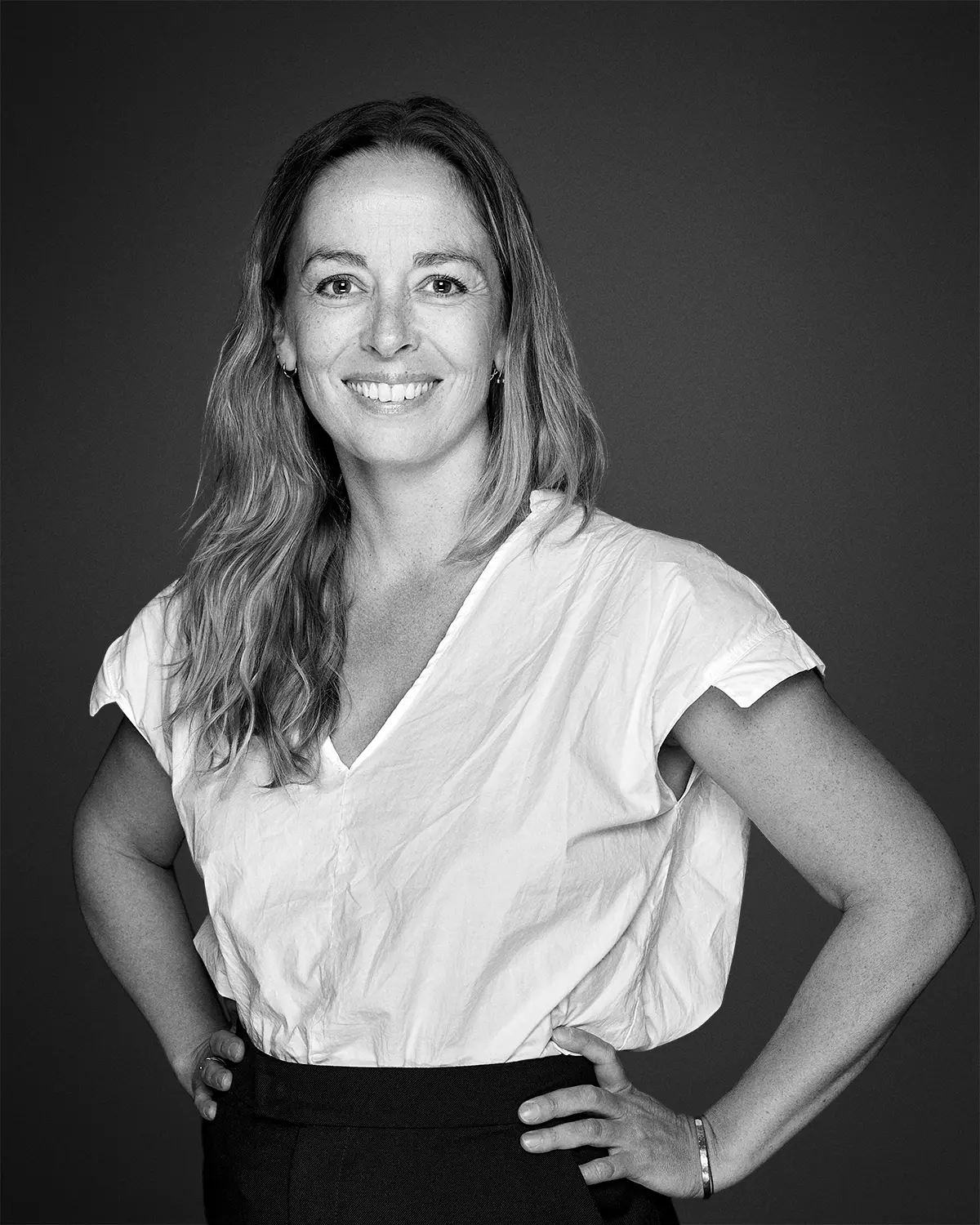
Director, Denmark
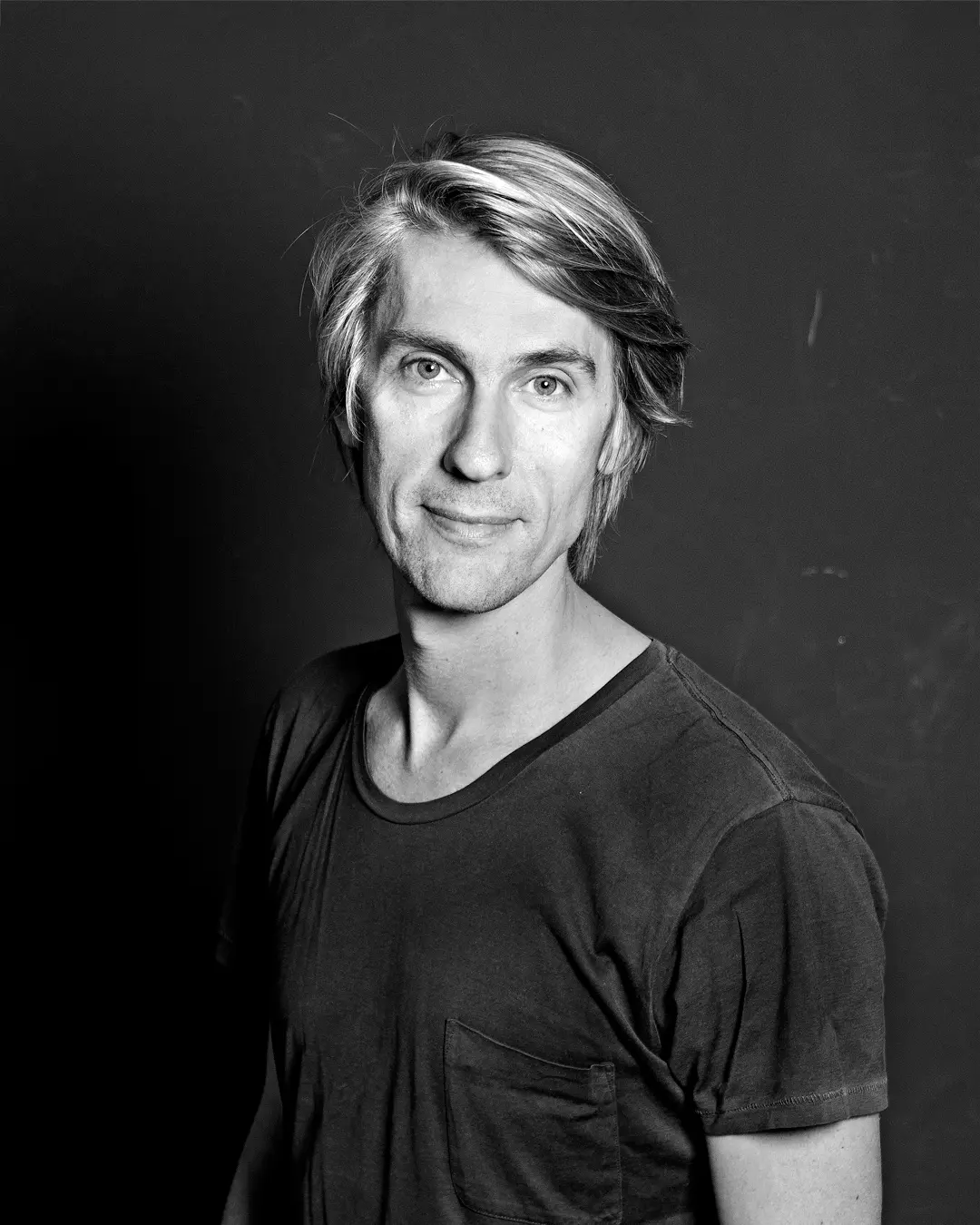
Lead Design Architect
Next project
Frederiksbjerg School
Explore project